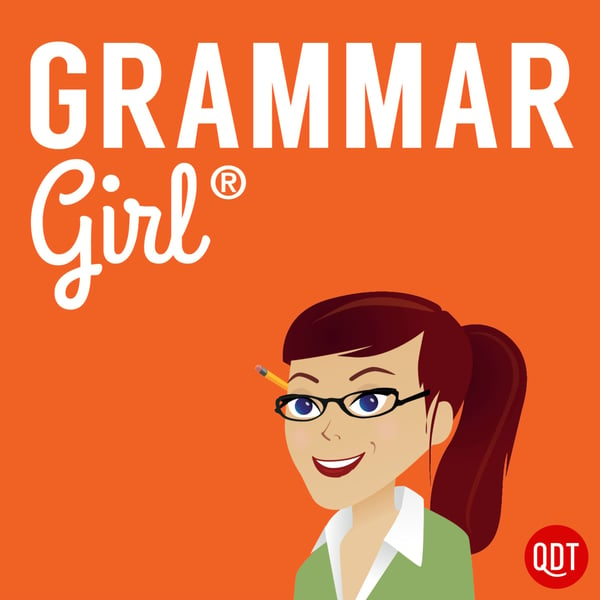Wordplay and cartoons: Inside the making of 'AB@C,' with Rob Meyerson and Dan Misdea
Grammar Girl Quick and Dirty Tips for Better Writing
Mignon Fogarty, Inc.
4.5 • 2.9K Ratings
🗓️ 30 January 2025
⏱️ 18 minutes
🧾️ Download transcript
Summary
Transcript
Click on a timestamp to play from that location
| 0:00.0 | Grammar Girl here. I'm In Yon Fogarty, and today I am here with Dan Mizzdi and Rob |
| 0:10.6 | Meyerson, the illustrator and author of this fabulous new book, A B at C, that is a book of |
| 0:18.8 | grammograms with adorable cartoons to go with them. So, you know, first, |
| 0:24.2 | why don't you tell us what makes something a gramma gram? Sure, great question. So at grammergram, |
| 0:30.4 | we've been calling them bite-sized bits of wordplay. And what they are are letters, numbers, or |
| 0:36.7 | symbols that you say out loud to form a word. |
| 0:40.9 | So common ones that we're all familiar with are IOU. |
| 0:44.1 | For this full sentence, IOU, you just can use the letters. |
| 0:47.9 | But also K-9 is actually spelled C-A-N-E, but we often almost always abbreviate it to just capital K and the number |
| 0:56.0 | nine. So if you take that and sort of run with it, you can actually create other words, |
| 1:01.8 | less familiar words, and full phrases and sentences, and all of those are grammograms. |
| 1:07.5 | Wonderful. And Dan, you are a cartoonist and you've done work for The New Yorker. And I understand |
| 1:12.5 | there's a long history of Grammar Grams that go back to the New Yorker. Yeah, sure. So, like, |
| 1:19.4 | the grandfather of Grammar Grams is William Styg, who is a legendary New York cartoonist who started |
| 1:25.6 | in 1930. And it wasn't until like 20 years later that he came up with CDB, |
| 1:33.1 | which was his first children's book and his forced foray into like wordplay. |
| 1:40.1 | He was obsessed with wordplay just as an artist in general and writer. |
| 1:44.5 | And that just for people who might not get it, that's see the B, like the C, look at the B, |
| 1:50.0 | the B, the flying thing. So CDB, see the B. |
| 1:53.2 | Yes, yes. So, yeah, that was, I guess in the 50s or 60s, he came out with CDB. |
| 1:59.6 | And, you know, he came out with other works beyond that. |
| 2:02.9 | Shrek, Amos and Boris. |
... |
Transcript will be available on the free plan in -59 days. Upgrade to see the full transcript now.
Disclaimer: The podcast and artwork embedded on this page are from Mignon Fogarty, Inc., and are the property of its owner and not affiliated with or endorsed by Tapesearch.
Generated transcripts are the property of Mignon Fogarty, Inc. and are distributed freely under the Fair Use doctrine. Transcripts generated by Tapesearch are not guaranteed to be accurate.
Copyright © Tapesearch 2025.

